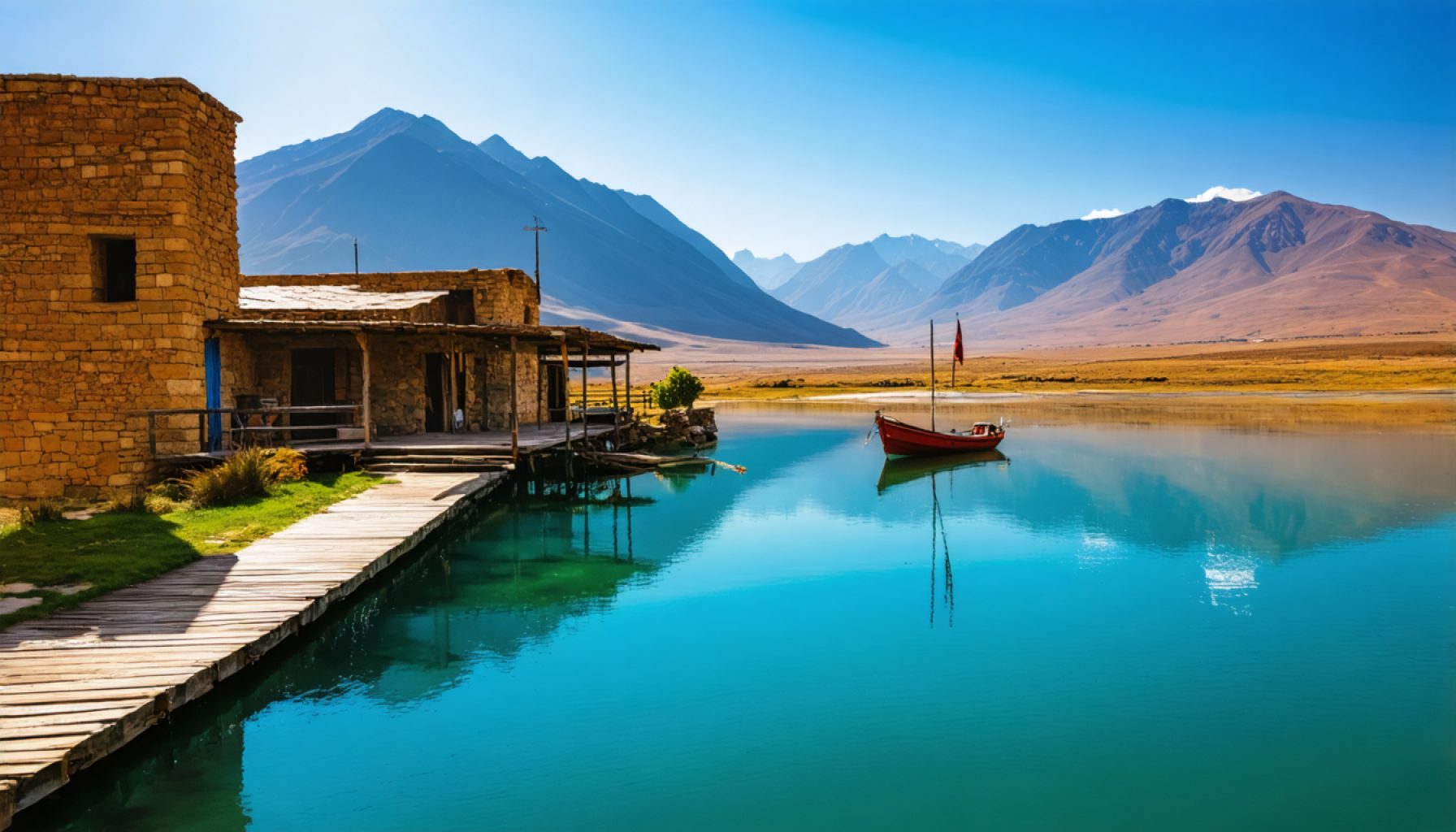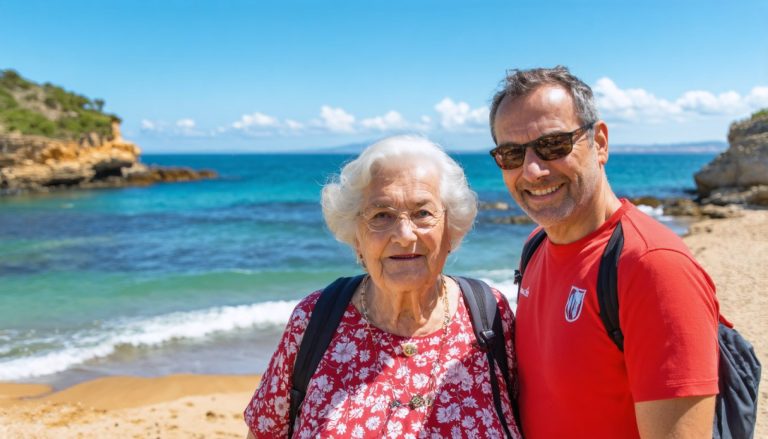
- Several popular travel destinations are experiencing overtourism, leading to environmental and cultural strain.
- Locations like Barcelona, Venice, Mallorca, Bali, Tokyo, Koh Samui, Oaxaca, Kerala, and Scotland’s northern coast are particularly affected.
- The pressure on these sites threatens their cultural heritage and natural beauty.
- Travelers are encouraged to consider the environmental impact of their visits and explore less-crowded destinations.
- The focus is on raising awareness about responsible tourism and preserving these locations for future generations.
- The essence of traveling lies in the journey and the meaningful experiences rather than just ticking off must-see destinations.
Picture this: serene beaches turned bustling, historic cities echoing with more selfie sticks than local voices, hiking trails littered with reminders of overuse. As we edge closer to 2025, discerning travelers face an unexpected challenge—navigation through a newly unveiled blacklist of popular destinations.
Imagine wandering through Barcelona’s charming streets, only to find yourself amid a sea of tourists rather than locals. The allure of the Las Islas Baleares’ sparkling waters, particularly Mallorca, fades as carrying capacity strains under relentless demand. Even the timeless beauty of Venice struggles beneath the weight of its own fame, much like the towering summit of Mount Everest.
This isn’t a solitary tale of Spain and Italy. Asia’s jewels like Bali and Tokyo, along with Thailand’s Koh Samui, also grapple with the unintended consequences of their must-see status. In Mexico, the vibrant culture of Oaxaca faces dilution, while Kerala in India sees a surge swamping its backwaters. Further west, even the pristine air above Scotland’s windswept northern coast feels a little less inviting.
There’s no denying the allure of these culturally rich and visually stunning spots. They offer snapshots of history, nature, and life that seem irresistible. Yet, these places are bending under a pressure so immense it risks cracking their foundations. For thoughtful explorers, there’s a compelling message here: perhaps it’s not just the destinations that make a journey unforgettable, but how gently we tread upon them.
The wisdom of this list isn’t about turning away. It’s about awareness—recognizing the impact of our footprints. By choosing less-trodden paths, future generations may yet share the same wonders. In the end, the true adventure may lie in discovering that the magic of travel rests infinitely more in the journey than the mapped-out destination.
10 Hidden Travel Gems: Explore Beyond the Overcrowded Hotspots
Real-World Use Cases: Escaping Overcrowded Destinations
As the allure of famous travel destinations wanes under the pressure of overtourism, travelers are exploring lesser-known locales that promise rich experiences without the crowds. The concept of “slow tourism” encourages longer stays to immerse oneself and connect with local cultures, thereby supporting economies directly.
1. Albania’s Coastline: With its clear waters and affordable prices, Albania offers an alternative to overcrowded Mediterranean destinations like Greece and Italy.
2. Slovenia’s Lakes: Visit Lake Bled, a picturesque body of water surrounded by the Julian Alps, without the heavy tourist numbers seen at comparable spots like Switzerland’s Lake Geneva.
3. Colombia’s Coffee Triangle: Experience authentic Colombian culture without the crowds of Cartagena. Try local brews and explore the lush landscapes.
Market Forecasts & Industry Trends
The tourism industry anticipates a shift towards sustainable travel, which UNESCO underscores as crucial to preserve world heritage sites. By 2025, there’s expected growth in eco-friendly and culturally respectful travel packages.
Pros & Cons Overview
Pros:
– Cultural Immersion: Lesser-known locations offer authentic local interactions.
– Cost-Effectiveness: Generally cheaper than mainstream hotspots.
– Environmental Benefit: Lower tourist numbers lead to less environmental degradation.
Cons:
– Accessibility: Some hidden gems may lack the convenience of major tourist infrastructure.
– Limited Information: Requires more personal research to plan trips effectively.
How-To Steps & Life Hacks for Finding Undiscovered Spots
1. Leverage Social Media: Follow travel bloggers and influencers who emphasize sustainable travel.
2. Use Local Resources: Traveler forums like Reddit and TripAdvisor can provide locals’ insights.
3. Consult Eco-tourism Agencies: They specialize in curating unique, sustainable travel experiences.
Controversies & Limitations
Although efforts to curb tourism’s negative effects are generally well-received, there’s been pushback from some local businesses reliant on tourist income. Balancing economic benefit with environmental and cultural preservation remains an ongoing challenge.
Security & Sustainability Insights
1. Community-Based Tourism: Engaging in tours and activities that give back to local communities enhances security and sustainability.
2. Offsetting Carbon Footprints: Travelers can contribute to projects that balance emissions caused by travel, aiding sustainability efforts.
Reviews & Comparisons
Peek at traveler reviews and comparisons to gauge expectations for alternative destinations. Use platforms like Lonely Planet to gain insights from other travelers’ experiences, ensuring the hidden gems match your travel aspirations.
Actionable Recommendations
– Plan for Off-Peak Seasons: Travel during the shoulder months to avoid crowds.
– Embrace Local Stay Options: Choose homestays or small, locally-run hotels to foster genuine connections and benefit local economies.
– Pack Lightly and Respectfully: Minimize your ecological footprint by packing reusable items and respecting environmental boundaries.
– Engage with Local Communities: Attend cultural festivals or workshops to gain a richer insight into the region’s heritage.
Navigating the treacherous waters of tourism’s future requires mindfulness. Standout adventures are found in treading gently, allowing for discoveries that future generations can enjoy. Make your next journey memorable not just by where you go, but how you choose to wander.






